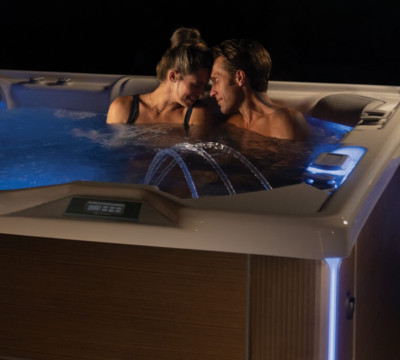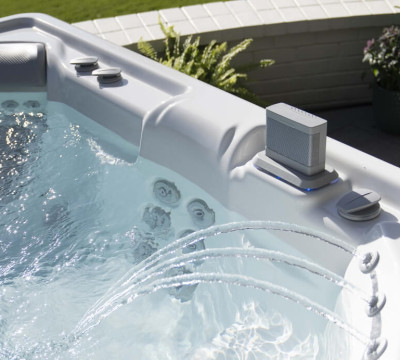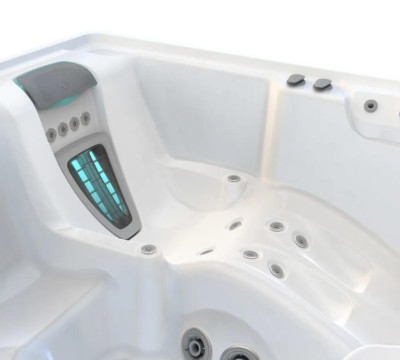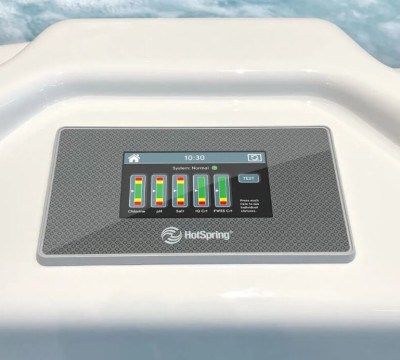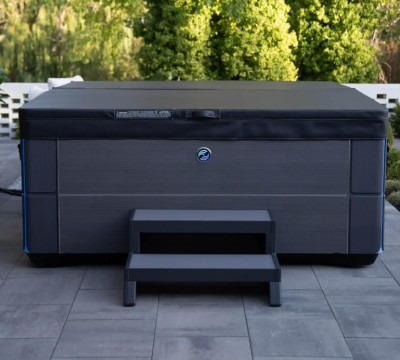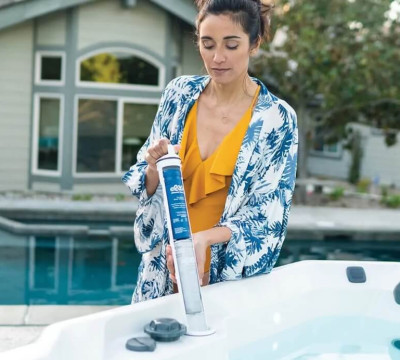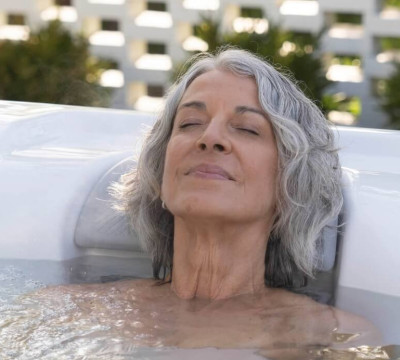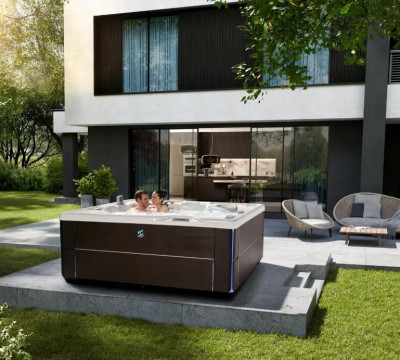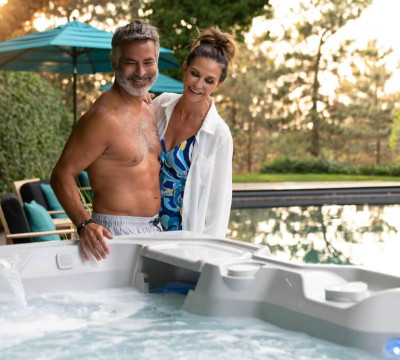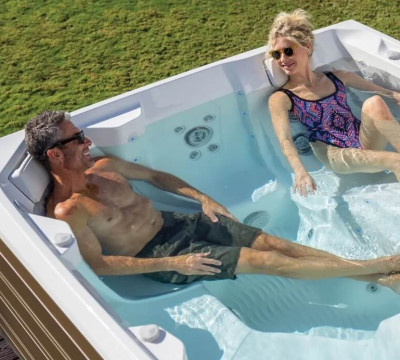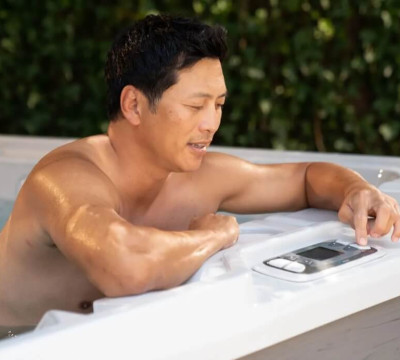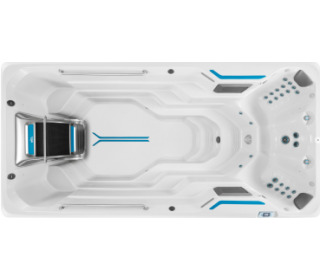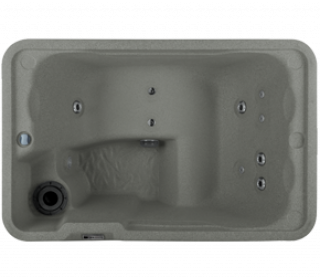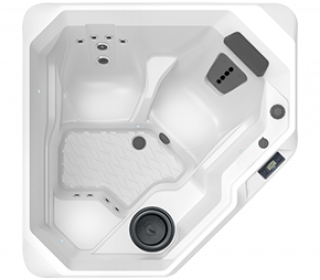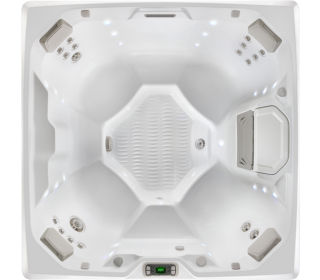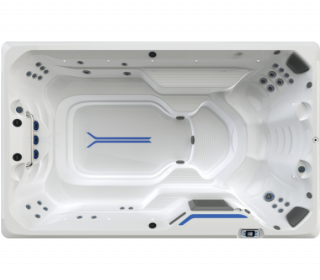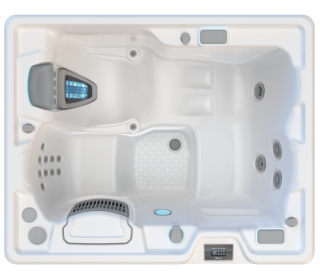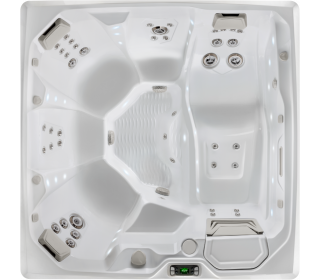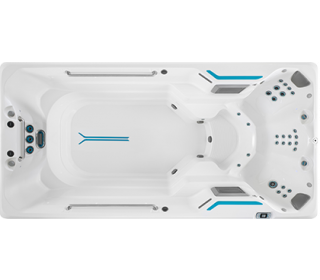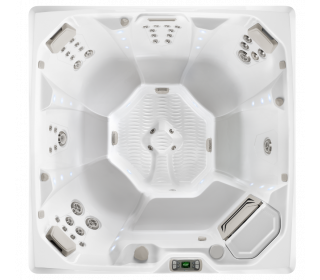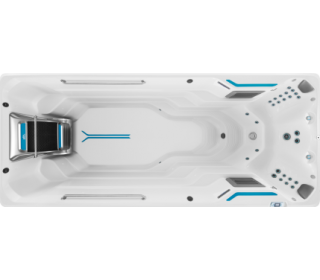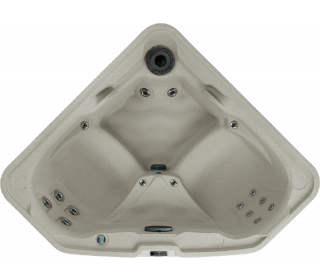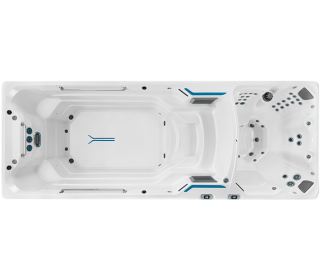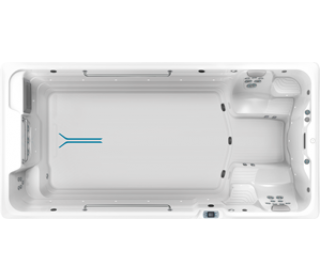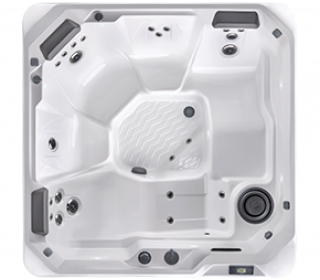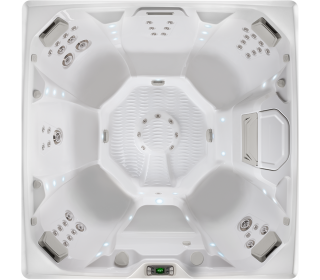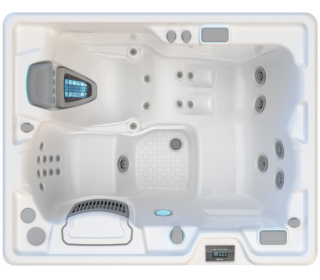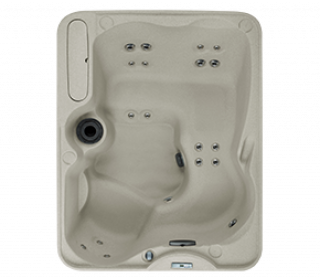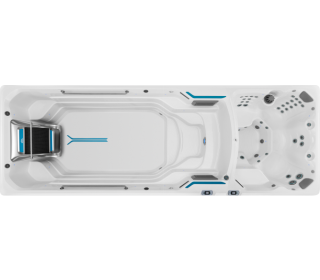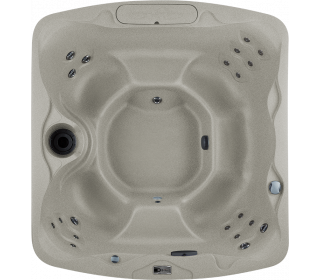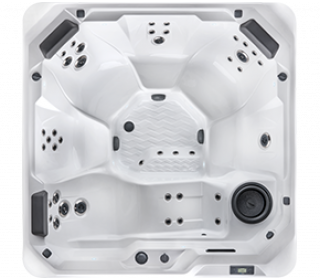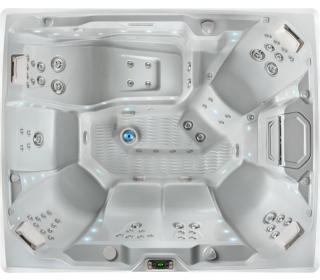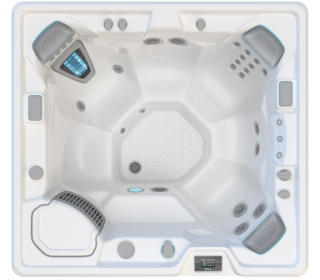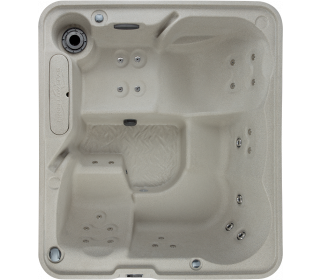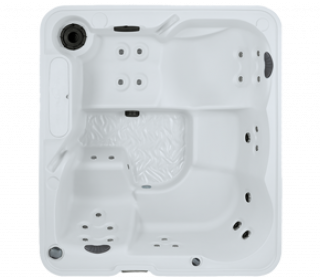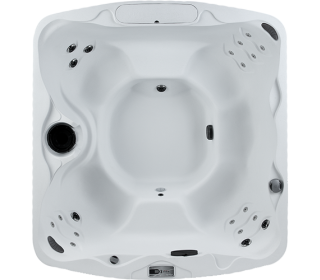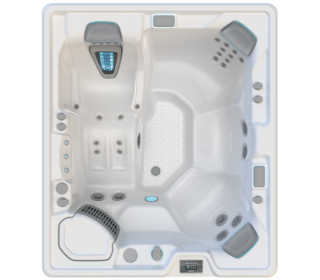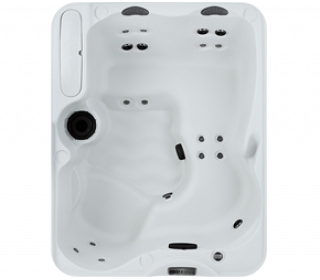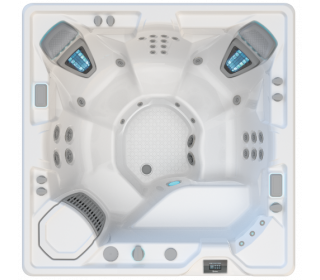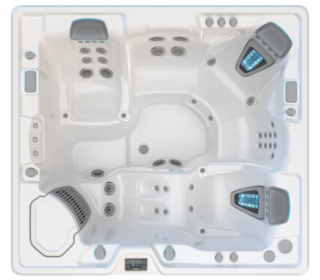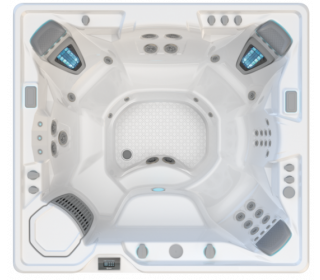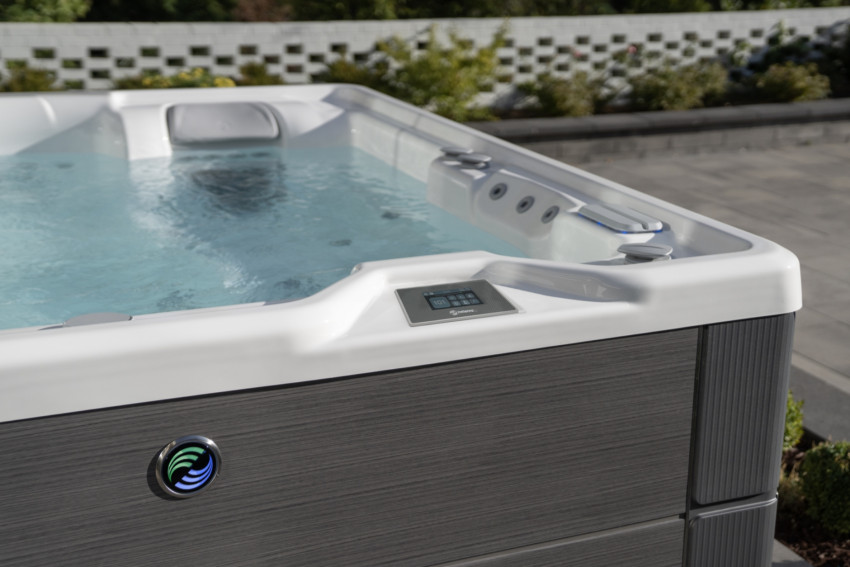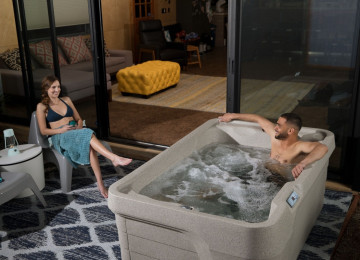In many ways swimming is the perfect form of exercise. With buoyancy counteracting the effects of gravity, swimming is free from the jarring impacts you feel when you work out on dry land, opening fitness up to people who may otherwise struggle to get active. It can also be as gentle or intense as you choose, ideal for everyone from the elderly to Olympians.
Resistance swimming sees a swimmer stay in one place, held there by either resistance bands or a current, which means there’s no need to turn around – you can enjoy a truly uninterrupted swim.
With ‘stationary swimming’ growing more and more popular, in this article we’ll take a closer look at resistance swimming: what it is, why you might do it, and what to look for in a stationary swimming system.
What is resistance swimming?
Resistance swimming is a form of aquacise in which you swim in place. You swim as you normally would, but you don’t go anywhere, either because you’re swimming against a current or while being held in place by resistance bands anchored outside the pool.
What are the benefits of resistance swimming?
Resistance swimming solves a problem that many swimmers face: the length of the pool. Unless you have easy access to an Olympic sized swimming pool, a swim can feel more like an endless series of tumble turns, particularly in backyard pools that tend to measure 10m or less in length.
In resistance swimming you simply need a pool that is large enough to comfortably complete a single swim stroke. This means that a resistance swimming pool as compact as the Fastlane Pools R200 swim spa, which measures just 3.66m long and 2.26m wide, can feel infinitely long, while fitting in even the most compact of backyards.
Freed from the annoyance of constantly turning around, resistance swimming allows you to concentrate on things like your form and fitness. By adding an underwater mirror to your Fastlane Pools swim spa you can keep an eye on your technique, and the addition of a digital display can help you keep an eye on your times.
You also have total control over the speed of the current, which ranges from a gentle doggy-paddle to an almost Olympic 1:14/100m in the Fastlane Pools E-Series. This opens up resistance swimming to everyone, from the elderly and people with limited mobility, right up to professional athletes.
Who can benefit from resistance swimming?
The low impact nature of resistance swimming, combined with the ability for a swimmer to choose their own intensity, makes it the ideal exercise for almost anyone looking to enhance their health and wellness.
Amateur and professional athletes
Resistance swimming is enjoyed by amateur athletes and Olympians alike. It can offer a seriously intense cardiovascular workout, while all but removing the impacts of dry land exercise that can cause wear and tear on muscles, joints and bones.
The elderly and disabled
Swimming against a gentle current or while being held back by a resistance band is a great way for the elderly to maintain or increase their mobility, and for those with a disability to get active too.
Sufferers of chronic pain
Those who suffer from chronic conditions like back pain, nerve pain, arthritis and fibromyalgia might find some relief in resistance swimming, particularly in the warm, soothing waters of a Fastlane Pools swim spa.
People recovering from injury
Whether you’re undergoing rehab after serious injury, or you’re simply looking to address those minor aches and pains that we all build up over the course of our lives, the therapeutic nature of resistance swimming can prove the ideal tool.
Hotels, gyms and day spas
By offering resistance swimming to your guests, your resort, hotel, gym or day spa will have an X-factor that can help you stand out from your competitors, and bring more customers in.
What equipment do you need for resistance swimming?
What equipment do you need to enjoy resistance swimming in your own backyard? A resistance swimming experience can be delivered three different ways: via a swim spa, a retrofitted pool, or a swim tether.
Fastlane Pools swim spas
A feature-packed version of a stationary swimming pool, a Fastlane Pools swim spa is a purpose-built resistance swimming machine. These portable, self-contained units feature a powerful propulsion system able to generate an adjustable current that is wider than your body and deeper than your stroke, to create the ultimate swim-in-place experience. These machines also come with hydromassage seating for pre-workout warm ups, post-workout cool-downs, or just weekend relaxation! See our guide comparing the pros cons of swim spas vs pools which covers the range of benefits you could experience and answers questions such as can you actually swim in a swim spa?
Fastlane Pro systems
You can turn any backyard pool into a stationary lap pool by fitting a Fastlane Pro system. Simply retrofit this current generation machine to one end of your pool, set your speed, and swim against the current for as long as you like!
See our comparison guide where we outline the benefits of Fastlane Pro Swim Jets vs. Badu and Fastlane Pro Swim Jets vs. Remco.
Swim tethers
While this option doesn’t provide the immersive experience of a Fastlane Pools swim spa or Fastlane Pro system, a swim tether is nonetheless a cost-effective way to enjoy the benefits of resistance swimming. A resistance band connects an anchor point located outside of the pool to a brace tied around the swimmer’s waist. The swimmer then swims against the natural resistance of the water, while the band holds them in place.
Hot Spring: irresistible resistance swimming
At Hot Spring we’ve spent years offering the finest resistance swimming products on the Australian market. We’re proud to have helped thousands of Aussies access the benefits of resistance swimming right in their own backyards, via our Fastlane Pools swim spas, Fastlane Pro systems and swim tethers.
If you’re looking for a fun, low impact and highly effective form of aquacise that you can enjoy in the privacy, comfort and convenience of your own backyard, look no further than Hot Spring.


